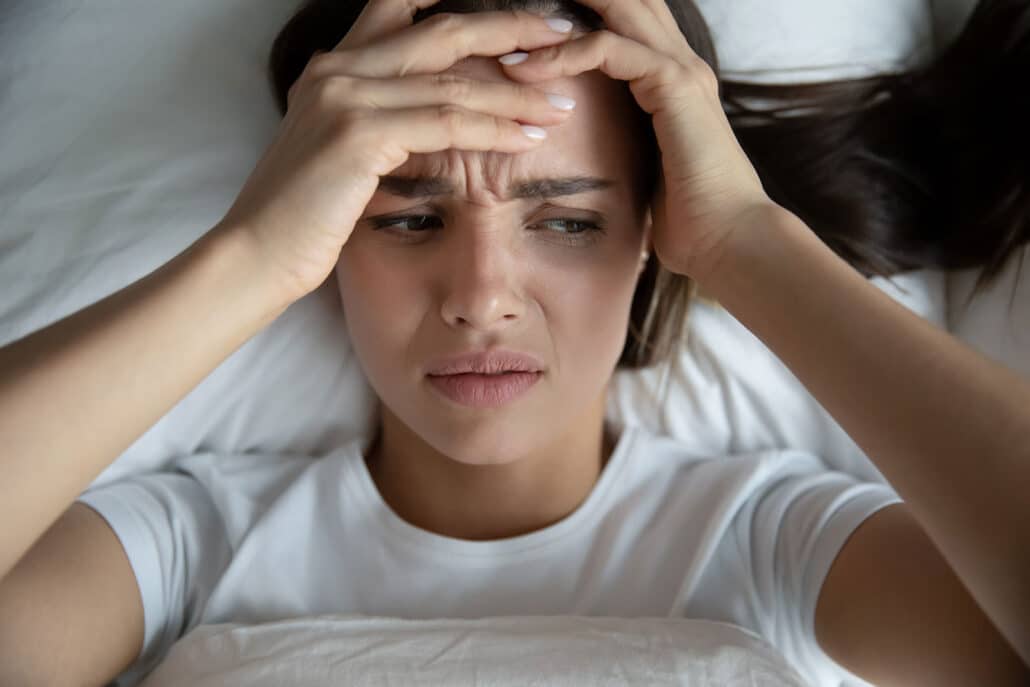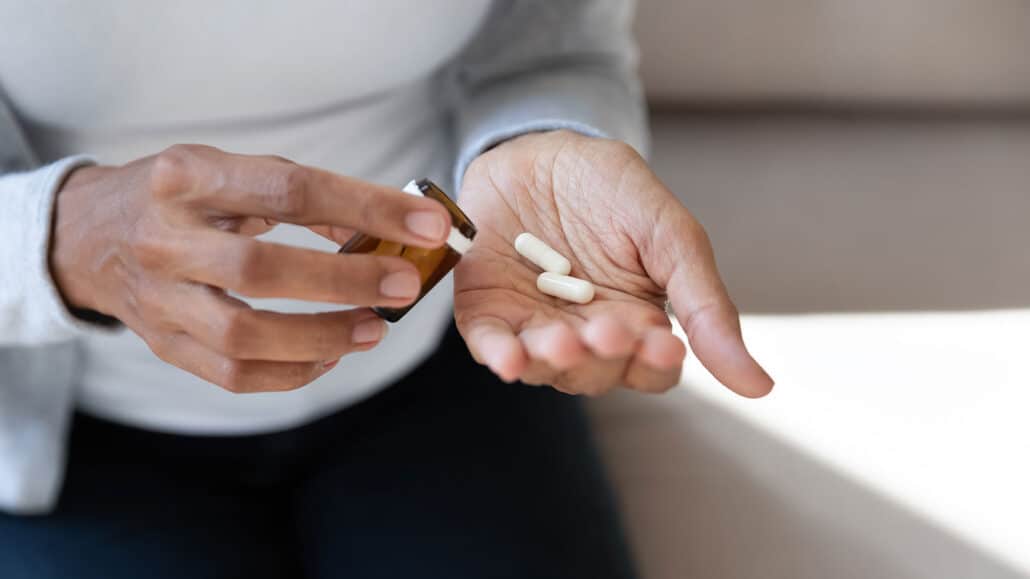Benzodiazepines, commonly referred to as “benzos”, have emerged as a class of drugs with a wide range of therapeutic uses. These medications are mainly used to treat anxiety disorders, but can also be prescribed for insomnia and forms of seizure and muscle spasms.

While these medications are highly effective, benzodiazepines can be highly addictive and cause severe withdrawal symptoms if not used properly or for a long period. In fact, recent studies show that benzos are the third most commonly abused drug in the U.S.
Despite being a long and challenging journey, benzo addiction treatment is not impossible, and in this article, we’ll walk you through everything you need to know to overcome its implications.
Table of Contents
Understanding Benzodiazepines
The story of benzodiazepines began in 1955 with the accidental discovery of chlordiazepoxide by Hoffmann-La Roche, which was later marketed as “Librium”.
This breakthrough led to the development of an enhanced variant, which was called “diazepam” and marketed as “Valium” in the early 1960s, marking a new era in the treatment of anxiety and insomnia.
The following decade has seen the rise of several variants of the drug, including:
- Xanax (alprazolam)
- Valium (diazepam)
- Ativan (lorazepam)
- Klonopin (clonazepam)
These medications exert their calming effects by enhancing the action of Gamma-aminobutyric acid (GABA), which is a brain neurotransmitter that naturally promotes relaxation and reduces anxiety.
The primary indications of benzos are treating anxiety disorders, insomnia, seizures (reducing both the frequency and intensity), and muscle spasms. The main advantage of using these drugs is that they provide rapid relief when compared to other conventional medications.
The Path to Benzo Addiction
Benzodiazepine addiction often begins with a legitimate prescription for any of the drug’s indications.
However, with highly addictive drugs like benzos, the fine line between therapeutic use and misuse can blur as individuals experience the rapid relief and calming effects of this drug.

Long-term use can lead to neuroadaptation, where the brain adjusts to the presence of benzos and becomes less sensitive to the natural neurotransmitter (GABA).
This adaptation can result in tolerance (requiring higher doses to achieve the same effect), dependence (the brain relies on benzos for normal functioning), and eventually, addiction.
The risk of developing benzodiazepine addiction is also quite high among Individuals with a history of substance abuse, family history of substance addiction, and mental health conditions.
Additionally, experiencing significant levels of stress or lacking adequate coping mechanisms may push some people to misuse the drug for its perceived stress-relieving properties.
Symptoms and Consequences of Benzo Addiction
Benzos addiction manifests in various severe consequences. The most evident and earliest ones encompass the physical aspect. These include drowsiness, slurred speech, poor coordination, and impaired cognitive functions.
On the other hand, the psychological symptoms later develop. These include confusion, mood swings between irritability and blunted emotions, a higher risk of self-harm, and noticeable memory problems.
The ramifications of benzo addiction extend beyond the individual, affecting their social and occupational spheres.
Relationships may suffer due to erratic behavior, emotional instability, and a lack of engagement. Relationships may suffer due to erratic behavior, emotional instability, and a lack of engagement.
Work performance can also deteriorate due to impaired concentration, memory lapses, and frequent absenteeism.
Combining Benzos with Other Drugs
Unfortunately, the negative symptoms and risk of benzos are even higher when they’re combined with other substances, especially alcohol and opioids.
These substances act synergistically, amplifying each other’s effects and increasing the likelihood of overdose and respiratory depression, which can be fatal.

Benzo Withdrawal and Detox
One of the most challenging aspects of benzodiazepine addiction is its severe withdrawal symptoms, which include:
- Severe insomnia
- Anxiety and tremors
- Muscle aches
- Seizures and convulsions (in extreme cases)
For that reason, medical supervision is crucial during benzo’s withdrawal (detox) to ensure safety and manage potentially severe symptoms.
This is because medical professionals will gradually taper the benzo dose during that period instead of abrupt discontinuation to minimize withdrawal symptoms and reduce the risk of complications.
Treating doctors might also use medications like anticonvulsants and antidepressants during the withdrawal period to provide additional support and assistance during the detox process.
Comprehensive Treatment Approaches
As previously established, treating benzo addiction is challenging but is entirely achievable, with studies showing that over 49% of patients were able to overcome their addiction without relapses. Here’s a quick look at some of the treatment approaches followed.
Inpatient vs. Outpatient Programs
Inpatient and outpatient programs cater to different levels of benzo addiction severity and individual needs.

Inpatient care, with its 24/7 supervision and intensive therapy, is best suited for severe addictions as well as those with co-occurring mental health conditions.
As for outpatient programs, they offer more flexibility and allow individuals to maintain most or all of their daily routines while receiving regular therapy. This makes them suitable for milder Benzo addictions or those with strong support systems.
After careful assessment of addiction severity, individual needs, and available resources, medical professionals will choose the most suitable route for treatment between the two.
Behavioral Therapies
Behavioral therapies play a crucial role in benzo addiction treatment, as they address the underlying psychological factors and promote long-term recovery after overcoming the withdrawal period. These treatment methods include:
- Cognitive-behavioral therapy (CBT): This targets maladaptive thought patterns and behaviors that contribute to addiction, helping individuals develop healthier coping mechanisms.
- Motivational Enhancement Therapy: This one aims to strengthen an individual’s motivation for change, exploring their ambivalence and enhancing their commitment to recovery.
These therapies equip individuals with the tools and strategies to manage triggers, prevent relapse, and foster a sustainable path toward a life free from benzo addiction.
Group and Family Therapies
Having a strong support network is one of the greatest ways to ensure a relapse-free recovery from benzo addiction, and that’s where the role of family and friends makes a massive impact.
Group therapy offers a safe space to share experiences, gain insights from peers, and cultivate a sense of community, as peer support is a cornerstone of successful recovery.
One the other hand, family therapy addresses the impact of addiction on family dynamics, fostering understanding, improving communication, and building a strong support system for long-term recovery.

Holistic Approaches
Besides primary treatments, holistic approaches can also offer a remarkable complementary treatment for benzo addiction.
These include yoga, meditation, and other alternative therapies like acupuncture. These treatments help promote relaxation, reduce stress, and enhance overall well-being, supporting a balanced approach toward recovery.
Aftercare and Relapse Prevention
Aftercare and relapse prevention are integral to long-term recovery from benzodiazepine addiction. A comprehensive aftercare plan can take a variety of forms, including:
- Ongoing therapy
- Support group participation
- Relapse prevention strategies to maintain sobriety and address potential triggers.
This ongoing support helps patients navigate challenges, develop healthy coping mechanisms, and maintain their commitment to recovery.
Challenges in Benzos Addiction Treatment
As previously mentioned, the path towards treating benzo addiction is not a straightforward one. In fact, the treatment involves addressing a range of complexities that can complicate the recovery process. The most prominent challenges include:
Benzo addiction often coexists with the use of other substances like alcohol or opioids, complicating treatment and increasing the risk of adverse outcomes.
Medical professionals must take these aspects into consideration while assessing a personalized treatment plan.

Co-occurring Mental Health Disorders
Benzo addiction treatment must address any underlying mental health conditions that require treatment of its own (given the therapeutic use of benzos) while managing benzo dependence, requiring a comprehensive and integrated approach.
Overcoming Societal Stigma and Self-Blame
Many patients refrain from seeking help to avoid the stigma surrounding addiction, which can hinder or complicate the treatment.
Addressing these issues requires education, empathy, and a supportive environment that encourages individuals to seek help whenever necessary.
Success Stories and Testimonials
Success stories and testimonials serve as beacons of hope, illuminating the path to recovery from benzo addiction.
They also offer tangible proof that reclaiming one’s life from the clutches of addiction is not only possible but quite achievable.
You can read a wide range of real success stories from various individuals out there, including the inspiring stories of Juliann and Betsy on Benzo.org.
As you can see, applying a comprehensive benzo addiction treatment that includes medical care, therapy, and ongoing support, empowers individuals to break free from dependence and reclaim their lives.

Conclusion
While benzo addiction presents a complex challenge, it is still a treatable condition with the right approach.
Recognizing the signs, seeking professional help, and embracing a multifaceted, personalized, treatment approach can all lead individuals toward a path of recovery without succumbing to triggers.
Lastly, as the prevalence of benzo misuse continues to raise concerns all over the world, we must collectively prioritize research and awareness initiatives to address this growing issue.
Related Articles:
- Opiates
- Dual Diagnosis
- LGBT
- Men’s Addiction Treatment
- Inhalants
- Clonidine
- Antidepressants
- Stimulants
- Alcohol
- Meloxicam
- Hallucinogens
- Benzo
- Kratom
- Marijuana
- Opioids
- Aftercare
- Prescription Drugs
- Relapse Prevention
- Medical-Assisted Treatment
References
- https://www.ncbi.nlm.nih.gov/pmc/articles/PMC6639084/
- https://pubmed.ncbi.nlm.nih.gov/24007886/
- https://www.ncbi.nlm.nih.gov/books/NBK513311/
- https://pubmed.ncbi.nlm.nih.gov/12725868/
- https://pubmed.ncbi.nlm.nih.gov/14999658/
- https://www.ncbi.nlm.nih.gov/pmc/articles/PMC8629021/
- https://academic.oup.com/fampra/article/20/4/370/625228
- https://www.ncbi.nlm.nih.gov/pmc/articles/PMC5812135/
- https://www.apa.org/ptsd-guideline/patients-and-families/cognitive-behavioral
- https://www.niaaa.nih.gov/sites/default/files/match02.pdf
- https://americanaddictioncenters.org/benzodiazepine/length-of-withdrawal
- https://www.benzo.org.uk/success.htm

